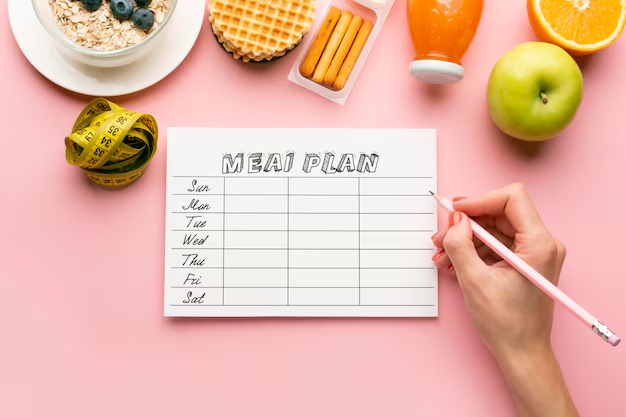This article is a valuable and practical guide for families looking to save money on groceries while still preparing delicious, nutritious meals. Here you will find a detailed economical menu for the week with recipes, a list of necessary products, and useful tips for planning your diet. This material will help you organize varied and budget-friendly meals for the whole family, and will also teach you how to prepare quick and delicious desserts. So, see below meal planning on a budget for families.
A Few Secrets Of Meal Planning On A Budget For Families:
To create an economical menu for the week for the family, it is important to adhere to several secrets. The first secret is planning. Make a list of dishes for each day in advance, taking into account the preferences of family members and the seasonality of products. The second secret is the use of seasonal and promotional products. Buy vegetables, fruits, meat, and fish under their seasonality, this will save money. The third secret is don’t forget about supplies.
When planning your menu, consider the foods you already have at home to avoid unnecessary expenses. The fourth secret is culinary imagination. Sometimes you can replace expensive ingredients with more affordable analogues without losing the quality of the dish. By following these tips, you can create an economical and varied menu for the week for the whole family.
How To Do Meal Planning On A Budget For Families:
There is nothing difficult in planning your diet if you do it in the right order. First, you need to determine the amount that the family can spend on food. They will come in handy if the price of some products turns out to be higher than expected or the housewife forgets to include something in the list and then has to buy more.
Having determined the budget size, you need to do the following:
Deal with the “deposits” in the kitchen cabinets and refrigerator. Is there a package of kefir missing on the shelf? You can make pancakes before it disappears. 200 g of split peas left? This is enough for a delicious pea soup. Have half a jar of jam? It will perfectly complement pancakes. We need to try to use reserves to the maximum.
Create a Menu for Every Day: Of course, based on the preferences of the family. There is no point in cooking cabbage soup if no one will eat it. It is better to put sauerkraut in other dishes. In addition, it is more economical to plan your diet so that there are fewer leftovers. For example, using a quarter of a pack of rice for soup, after a couple of days prepare pilaf from the remaining cereal.
Write a list of Products: Before you go to the store, check what ingredients you need at home. Don’t forget about the “little things”: salt, sugar, yeast, baking powder, vegetable oil, etc.
Decide on Volumes: It depends on the number of eaters. For a family of three, one tray of chicken wings is more than enough for dinner. But where parents, five children, and grandparents sit at the table, and even a cat begs for pieces from the table, this is clearly not enough.
Now you Can Go to the Store: But just have a snack before that! Very often, when people come to the supermarket hungry, they buy a lot of extra things.
Interesting Facts:
Reusing Vegetable Trimmings: Vegetable trimmings (eg carrot tops, potato skins) can be used to make a hearty broth that can then be used in soups and stews.
Use Seasonal Produce: Buying seasonal fruits and vegetables not only reduces costs but also provides nutritional benefits since they are fresher and contain more nutrients.
Meal Planning for the Week: Planning meals for the week can reduce food waste and save time on grocery shopping and meal prep. It also helps you stick to your budget by preventing impulse purchases and snacking.
Sample Menu For 7 Days:
Monday:
Breakfast: Omelet with vegetables and herbs, a slice of bread, and a cup of green tea.
Lunch: Chicken noodle soup, mashed potatoes, fresh vegetable salad.
Dinner: Pasta with tomato sauce, baked vegetables, yogurt.
Tuesday:
Breakfast: Buckwheat with stewed vegetables, and a cup of coffee.
Lunch: Pilaf with chicken, fresh cucumber, and compote.
Dinner: Fish cutlets, boiled potatoes, cabbage salad.
Wednesday:
Breakfast: Yogurt with muesli and fruit.
Lunch: Meat goulash, boiled rice, carrot salad.
Dinner: Vegetable stew with chicken, and kefir.
Thursday:
Breakfast: Toast with cheese and tomatoes, a cup of tea.
Lunch: Lasagna with meat sauce, fresh cucumber, compote.
Dinner: Omelet with cheese and herbs, vegetable salad, yogurt.
Friday:
Breakfast: Oatmeal with honey and nuts, coffee.
Lunch: Chicken wings in tomato sauce, mashed potatoes, fresh cucumber.
Dinner: Chinese rice with vegetables, and yogurt.
Saturday:
Breakfast: Pancakes with cottage cheese and jam, tea.
Lunch: Solyanka, a slice of bread, fresh cucumber.
Dinner: Pasta with mushroom sauce, fresh vegetable salad, yogurt.
Sunday:
Breakfast: Scrambled eggs with tomatoes, a cup of coffee.
Lunch: Baked chicken with potatoes, fresh cucumber, compote.
Dinner: Vegetable stew, slice of bread, yogurt.
List Of Required Products:
The list contains the names of products that are needed to prepare the indicated dishes, but not the quantity. The housewife needs to calculate the volume of meat, fish, cereals, and vegetables herself, depending on how many people are to be fed. So, what you need for the week:
- Meat;
- Chicken Breast;
- Chicken Legs, Thighs, Or Wings;
- Chicken Liver;
- Fish, Sea, Or River;
- Pasta;
- Noodles;
- Rice;
- Buckwheat;
- Oatmeal;
- Beans;
- Fresh Or Dried Mushrooms;
- Sauerkraut;
- Fresh Vegetables (Beets, Carrots, Cabbage, Onions, Garlic, Seasonal);
- Potato;
- Greenery;
- Salted Cucumbers;
- Canned Tomatoes, Zucchini, Etc.
- Prunes;
- Apples;
- Eggs;
- Cottage Cheese;
- Sour Cream;
- Milk;
- Kefir;
- Cheese;
- Butter;
- Tomato Paste;
- Flour;
- Baking Powder Or Soda;
- Breadcrumbs;
- Vegetable Oil.
Conclusion:
Some of the food may remain, but you shouldn’t put off a third of a bag of cereal, a handful of mushrooms, or half a jar of cucumbers “for later.” It is better to create a menu for the next week so that all leftovers are used. For example, 200-250 g of rice can be added to soup or mixed with minced meat and made into cabbage rolls or meatballs. And use cucumbers to prepare pickles or vinaigrette.
When purchasing products, you should not forget about individual preferences. For example, in some families, they drink a lot of kefir/milk, love cottage cheese, or eat at least one apple (orange, banana, etc.) a day. All this will need to be taken into account and missing products included in the list, as well as tea, coffee, cocoa, salt, and sugar.
FAQ
Q. How to make a list of products to save?
A. Use the menu planner to plan your meals for the week and create a grocery list based on ingredients. Group similar products to save on bulk purchases. Buy seasonal products, they are usually cheaper.
Q. What dishes should be included in the budget menu?
A. Focus on dishes with inexpensive ingredients, such as beans, lentils, and chicken thighs. Choose seasonal vegetables and fruits, they are cheaper. Use frozen instead of fresh as they are usually cheaper.
Q. How to save money on healthy eating?
A. Plan your menu and cook your meals at home as it is cheaper than eating out. Choose whole foods that are rich in nutrients and keep you full. Buy from discount stores or use coupons and promotional codes.



